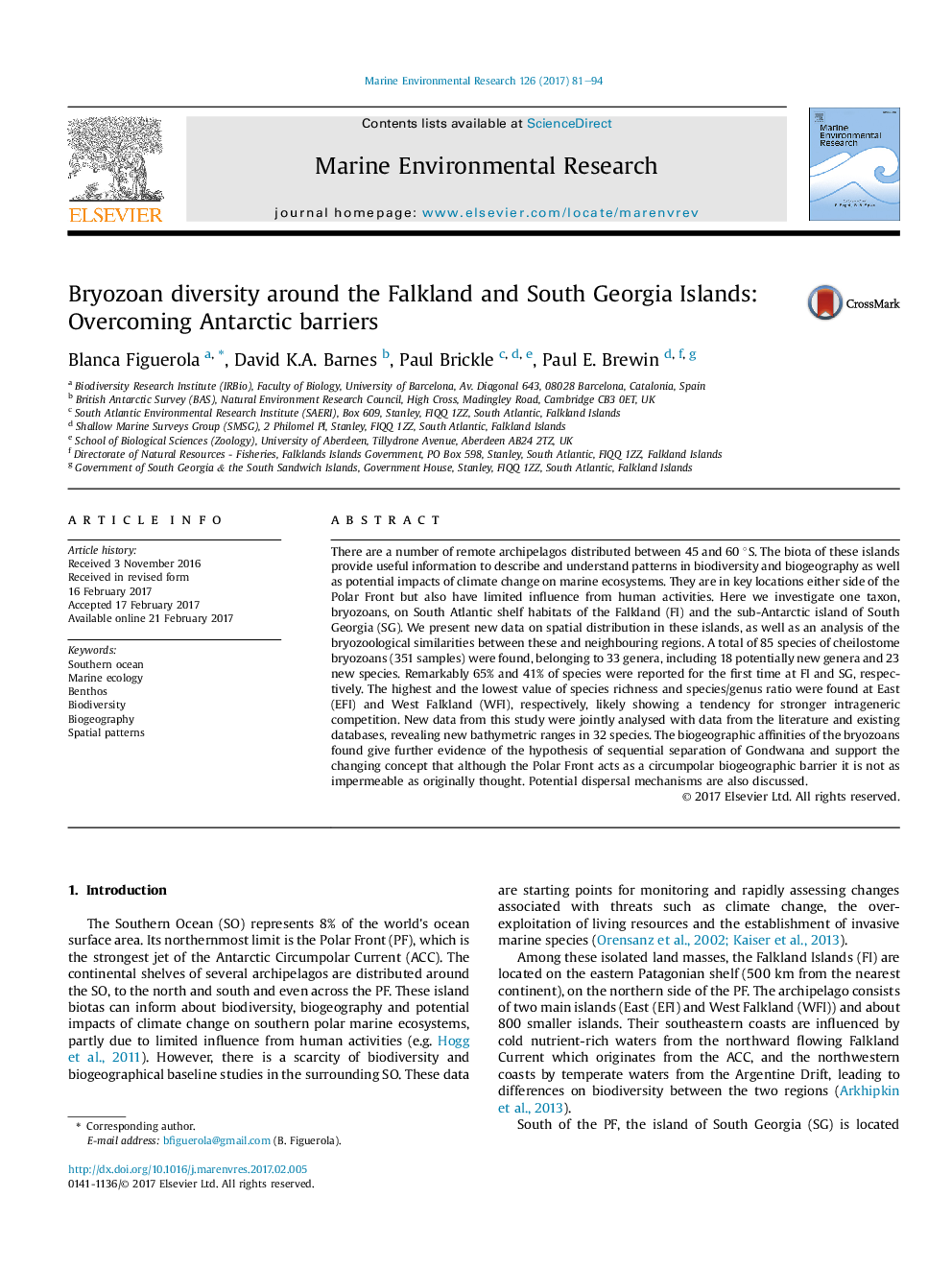| کد مقاله | کد نشریه | سال انتشار | مقاله انگلیسی | نسخه تمام متن |
|---|---|---|---|---|
| 5766264 | 1627557 | 2017 | 14 صفحه PDF | دانلود رایگان |
- A total of 18 unknown bryozoan genera and 23 species were found.
- The study reveals new bathymetric ranges in 32 species.
- The study gave evidence of the hypothesis of sequential separation of Gondwana.
- The study supports the changing concept that the Polar Front is not as impermeable.
- Potential dispersal mechanisms are also discussed.
There are a number of remote archipelagos distributed between 45 and 60 °S. The biota of these islands provide useful information to describe and understand patterns in biodiversity and biogeography as well as potential impacts of climate change on marine ecosystems. They are in key locations either side of the Polar Front but also have limited influence from human activities. Here we investigate one taxon, bryozoans, on South Atlantic shelf habitats of the Falkland (FI) and the sub-Antarctic island of South Georgia (SG). We present new data on spatial distribution in these islands, as well as an analysis of the bryozoological similarities between these and neighbouring regions. A total of 85 species of cheilostome bryozoans (351 samples) were found, belonging to 33 genera, including 18 potentially new genera and 23 new species. Remarkably 65% and 41% of species were reported for the first time at FI and SG, respectively. The highest and the lowest value of species richness and species/genus ratio were found at East (EFI) and West Falkland (WFI), respectively, likely showing a tendency for stronger intrageneric competition. New data from this study were jointly analysed with data from the literature and existing databases, revealing new bathymetric ranges in 32 species. The biogeographic affinities of the bryozoans found give further evidence of the hypothesis of sequential separation of Gondwana and support the changing concept that although the Polar Front acts as a circumpolar biogeographic barrier it is not as impermeable as originally thought. Potential dispersal mechanisms are also discussed.
Journal: Marine Environmental Research - Volume 126, May 2017, Pages 81-94
